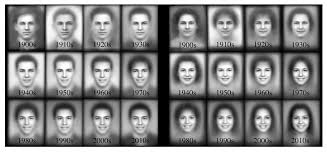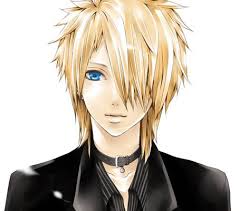Who were known as white in Russia? Beloye dvizheniye, IPA: [ˈbʲɛləɪ dvʲɪˈʐenʲɪɪ]) also known as the Whites (Бѣлые / Белые, Beliye), was a loose confederation of anti-communist forces that fought the communist Bolsheviks, also known as the Reds, in the Russian Civil War (1917–1922/1923) and that to a lesser extent continued operating as militarized
What does it mean if someone is a White Russian? White Russiannoun. A Russian who supported the tsar in the 1917 Revolution and the Russian Civil War (191820), and afterwords. White Russiannoun. A Belarusian person.
What is the difference between black and white Russians? The difference between the Black Russian and the White Russian is simply the addition of cream to the mix and a slight change in the quantities. Both of these drinks use the same style of glass; the old fashioned glass; and are served over ice.
Where did White Russian originate from? And yet, the White Russian endures. The drink was conceived in 1949 when Gustave Tops, a Belgian barman, created the cocktail, along with its sister cocktail, the black Russian – a White Russian without any cream – at the Hotel Metropole in Brussels in honor of Perle Mesta, then U.S. ambassador to Luxembourg.
Who were known as white in Russia? – Additional Questions
What race is Russian?
The Russians (Russian: русские, romanized: russkiye) are an East Slavic ethnic group native to Eastern Europe, who share a common Russian ancestry, culture, and history.
Were there Russians in Africa?
There was never an observable number of people of African descent in Russia, even after Western European colonization of the continent. For centuries Russia was too isolated to interact with Africa.
Why is Belarus called White Russian?
The name Rus’ is often conflated with its Latin forms Russia and Ruthenia, thus Belarus is often referred to as White Russia or White Ruthenia.
Where did the Cossacks come from?
1. Modern Cossacks trace their heritage to the self-ruled communities of horsemen who appeared in the 14th century in what is now southern Russia and Ukraine. The two of the largest groups consolidated into the Zaporojie and Don Cossack groups by the 16th century.
Is Cossack an ethnicity?
Generally speaking, Cossacks are not Slavs and they’re recognized as an ethnicity in the 2010 Russian Population Census.
Were Cossacks Russian or Ukrainian?
Cossacks were mainly East Slavs, especially Russian and Ukrainian people. In the 15th century, the term originally described semi-independent Tatar groups which lived on the Dniepr River, which flows through Ukraine, Russia and Belarus.
Do Cossacks still exist?
Between 3.5 and 5 million people associate themselves with the Cossack cultural identity across the world. Cossack organizations operate in Russia, Kazakhstan, Ukraine, Belarus and the United States.
What language did Cossacks speak?
Balachka (Russian: балачка, IPA: [bɐˈlat͡ɕkə]; Ukrainian: балачка) is a dialect spoken by the people where Russian culture were influenced by the steppe Cossack culture like in the Kuban and Don regions.
| Balachka |
| Ethnicity |
Cossacks |
| Language family |
Indo-European Balto-Slavic Slavic East Slavic Balachka |
What does Cossack mean in Russian?
Cossack, Russian Kazak, (from Turkic kazak, “adventurer” or “free man”), member of a people dwelling in the northern hinterlands of the Black and Caspian seas.
Are Cossacks from Ukraine?
Historical sources tell us that the Ukrainian Cossacks came from a variety of nationalities and social groups. Their ancestors came from Ukrainian, Russian, Polish, and Tatar territories, and migrated at great risk to the southern steppes to hunt, fish, gather honey, and make handicraft goods.
Who did Crimea originally belong to?
The Crimean interior came under the control of the Turco-Mongol Golden Horde from 1239 to 1441. The name Crimea (via Italian, from Turkic Qirim) originates as the name of the provincial capital of the Golden Horde, the city now known as Staryi Krym.
Are Cossacks and Kazakhs the same?
Historically, Cossacks in Kazakhstan consisted of several territorial groups that were separate troops. The Ural, Orenburg, Siberian and Semirechensky Cossack troops constituted Russia’s political, military, economic and socio-cultural presence in Kazakhstan and would directly interact with the Kazakh population.
Can you become a Cossack?
It is inclusive, unlike, for example, the Polish myth of szlachta (nobility). As it was believed in Ukrainian tradition, everybody could have become a Cossack, regardless of their nationality and social status; the main condition for it was an acceptance of Cossack values.
What does Cossack mean in Ukrainian?
The name Cossack (Ukrainian: козак; kozak) is derived from the Turkic kazak (free man), meaning anyone who could not find his appropriate place in society and went into the steppes, where he acknowledged no authority.
How many Russian tribes are there?
There are over 100 identified ethnic groups in Russia.
What happened to the Cossacks?
Most Cossacks were sent to the gulags in far northern Russia and Siberia, and many died; some, however, escaped, and others lived until Nikita Khrushchev’s amnesty in the course of his de-Stalinization policies (see below).


